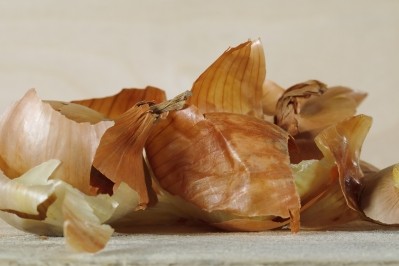‘Comprehensive understanding’ on biomass highlights promise for protective beauty: Review
![Research into soil, compost and agri-food waste continues to rise, shedding light on interesting bioactive characteristics of compounds that can be used in skin care [Getty Images]](/var/wrbm_gb_food_pharma/storage/images/_aliases/wrbm_large/publications/cosmetics/cosmeticsdesign-europe.com/headlines/formulation-science/agri-food-waste-and-organic-biomass-promising-for-protective-beauty-development-says-review/16221697-1-eng-GB/Agri-food-waste-and-organic-biomass-promising-for-protective-beauty-development-says-review.jpg)
Writing in the journal Plants, researchers from Italy investigated the potential for organic biomass and agri-food waste to be used in the sourcing of compounds to target skin photoageing. This was especially relevant, they said, as demands for bioactive compounds for cosmetics and pharmaceuticals continued to rise, driving the need to find “new sustainable methods” to source and integrate these ingredients into formulations.
“The principle of sustainable practices and the circular economy favour the use of bioactive components derived from recycled biomass,” they said.
This concept also aligned with current European Commission (EC) guidelines supporting the reuse of various types of organic biomass and organic waste to transform “waste management problems into economic opportunities”, the researchers said.
Biomasses science strong
Review findings found that substantial advances had been made in the scientific study of biomass and its active compounds.
“The comprehensive understanding of the specific relationship between the molecular features of natural extracts or derivates and their bioactivity represents an important step forward in supporting the potential exploitation of natural sustainable materials in the medicinal field,” they said – across pharmaceuticals and active cosmetics.
Antioxidants like phenylpropanoids and flavonoids, for example, which were well known as being effective against skin photoageing, were found in many natural substances, including those derived from organic biomass and waste, the researchers said.
Studies on the specific use of organic compounds arising from the decomposition and transformation of plant, animal, and microbial residues – humic extracts – also suggested these carried protective properties in human skin cells because of an increase in certain cytokines when applied topically. “Recent scientific advances highlight the potential beneficial dermatological effects of humic matter derived from renewable sources, such as recycled biomasses with defined structural activity correlations,” the researchers wrote.
The forgotten hero?
The researchers said agri-food waste had “long been considered as unavoidable leftovers”. However, following quick diffusion of the circular economy concept in recent years, these residual biomasses and by-products had now been more closely looked at and considered a “viable and promising source of valuable natural organic molecules”.
Agri-food waste, they said, was now being investigated to develop biopesticides and biofertilisers, as well as contribute to wider product development across cosmetics, nutraceuticals and pharmaceuticals. The number of cosmetic and pharmaceutical products on the market made through the valorisation of food by-products, however, remained “somewhat limited and underexploited” despite functional cosmetics market set to surge to €3.86bn (US$4.1bn) by 2026 globally.
Research efforts and scientific interest were there, though, they said.
Different agri-food waste and by-products had been tested for antioxidant and photoprotective activity against UVB radiation, for example, and residual blanch water from almond processing tested to elevate the antioxidant activity and radical scavenging activities for better photoprotection on the skin. Similarly, smart tech had been designed to isolate the powerful antioxidant compound ferulic acid from brewers’ spent grain in the beer industry to produce an encapsulated nanocomposite for skin application.
Investigation into biomolecules for skin care and photoageing had also highlighted “significant potential” for chitin and lignin – two natural structural biopolymers, both of which could be extracted from food waste and used in formulations at low cost.
Cosmetics from compost
The researchers said scientific studies into humic substances had largely been focused on complex organic materials found in mud or aquatic sediments for now, with only a limited range of studies investigating use of humic substances for cosmetic and dermatological applications.
Within the beauty research conducted, however, they said an “innovative” angle being taken was developing natural skin treatments from compost and vermicompost compounds, looking at the biostimulant activity of aromatic plants to improve the yield and effectiveness of antioxidant and anti-inflammatory metabolites in the compost matter.
Source: Plants
Published online ahead of print, doi: 10.3390/plants12040840
Title: “Use of natural agents and agrifood wastes for the treatment of skin photoaging”
Authors: M. Parisi et al.



![Skin moisture, firmness and elasticity, collagen content and the overall appearance of wrinkles improved most with a combined supplement and topical curcuma approach [Getty Images]](/var/wrbm_gb_food_pharma/storage/images/_aliases/wrbm_medium/publications/cosmetics/cosmeticsdesign-europe.com/headlines/formulation-science/skin-ageing-targeted-best-with-curcuma-supplements-and-curcuma-cream-in-combination-finds-study/16231219-1-eng-GB/Skin-ageing-targeted-best-with-curcuma-supplements-and-curcuma-cream-in-combination-finds-study.jpg)





